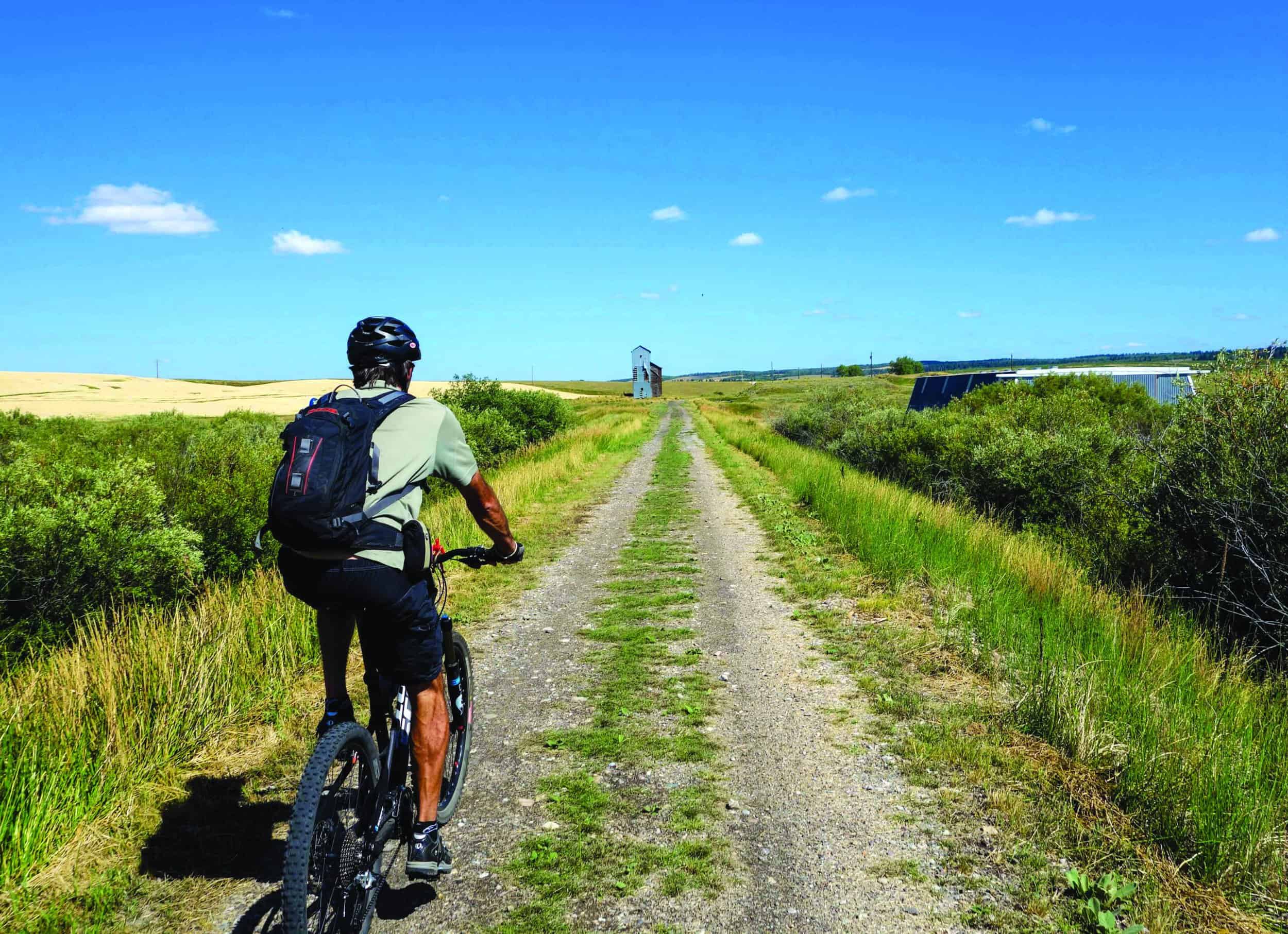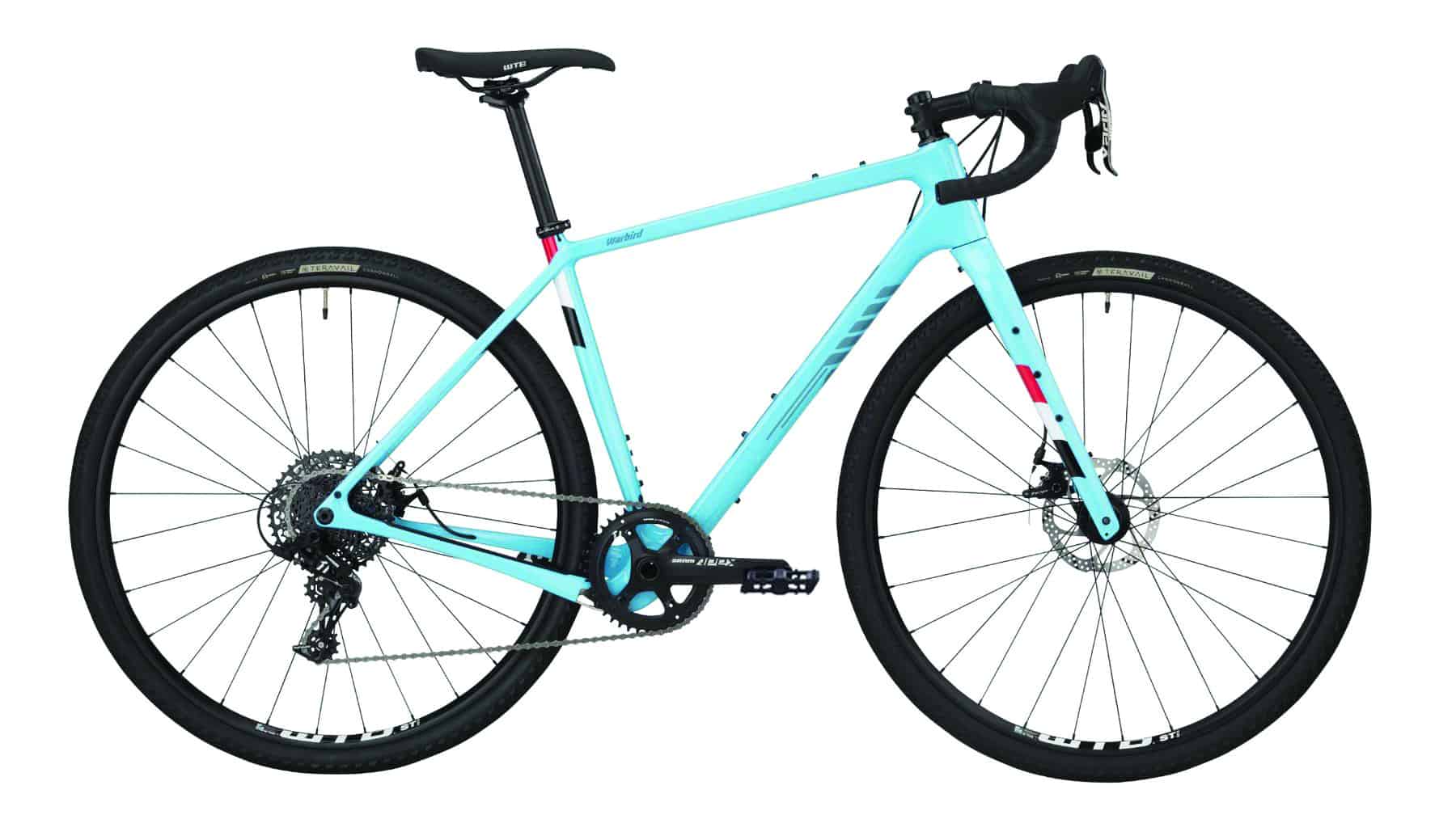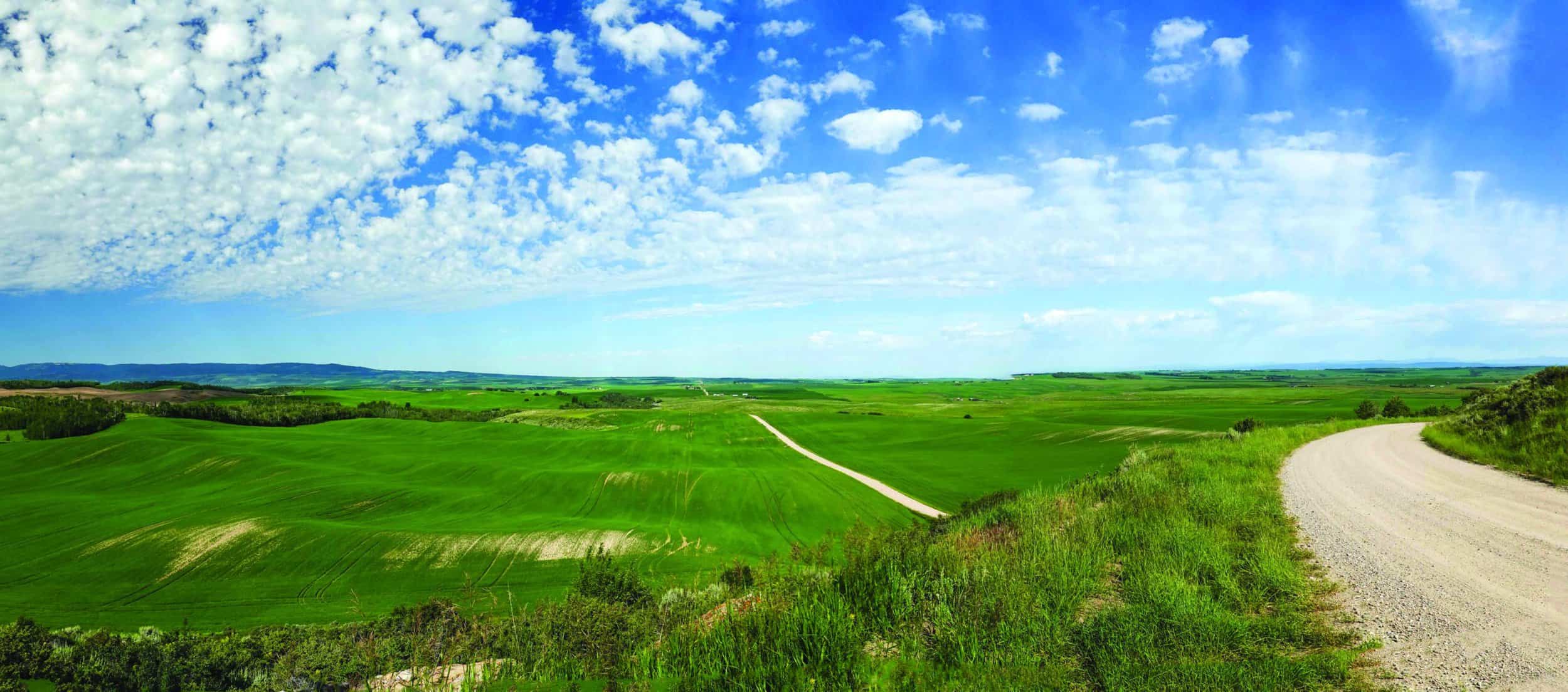Read The
Current Issue
Leave the pavement (and traffic) behind in favor of riding on dirt and gravel roads.
// TEXT and photos by Dina Mishev

With more than a quarter of all roads—about one million miles—in the U.S. being unpaved, and a growing feeling that riding alongside cars on highways isn’t worth the risk, you could ask why it took so long for gravel biking to take off. The first commercially available bike designed specifically for riding on fire roads, power-line trails, rail trails, and farm tracks—where stoplights are unknown and cars are few and far between—made its debut less than a decade ago. (That bike was the Salsa Warbird, which came out in 2012.) Since then, though, gravel riding has exploded. “Gravel riding is a really great combination of the speed and excitement of road riding and the sense of adventure and going other places that mountain biking gives us,” says George Flynn, co-owner of Fitzgerald’s Bicycles and general manager of the store’s Jackson location. “The other thing is that, as drivers have become more distracted, the traditional road rides we all used do are really scary. Riding on gravel, you can get speed and excitement on roads that have far, far fewer cars, if any.”
Local bike shops rent gravel bikes. (Fitzgerald’s has a demo fleet of made-in-the-U.S. Allied Able carbon fiber gravel bikes.) Here are three of our favorite rides, listed in order from easiest to most challenging.
1.
In its entirety, Teton Valley’s Ashton-Tetonia Rail Trail is sixty miles round-trip. If you’ve got the fitness and the time, by all means ride the whole thing. But the rail trail, the former Oregon Short Line Railroad, has access points along its length, allowing you to do sections as short as five miles. Starting at either end, you can ride to a historic trestle bridge. From Ashton, it’s seven miles to the Conant Creek Trestle Bridge, a 780-foot-long bridge hanging 130 feet above Conant Creek. If you start in Tetonia, it’s ten miles to the Bitch Creek Trestle. Start at Judkins (near the intersection of Reece Rd. and W. 14250N), and it’s only two miles to the trestle bridge. parksandrecreation.idaho.gov/parks/ashton-to-tetonia-trail
2.
There are locals who do the 160-mile Around the Rock Loop in a single day. A more sane way to do it is over two days. The “rock” this ride goes around is the entire Teton Range, and Headwaters Lodge at Flagg Ranch is about halfway if you start the loop in Victor and ride clockwise. The first forty-ish miles from Victor are gorgeous gravel through rolling farmland and national forest. At Grassy Lake Rd. on the John D. Rockefeller Jr. Memorial Parkway between Grand Teton and Yellowstone National Parks, take a right and it’s a final twenty-five miles of gravel through the forest and past Grassy Lake Reservoir. The pavement starts again just before you get to Headwaters Lodge. Stay the night here and then you’ve got about eighty miles of smooth riding on US Highways 191/89/287, the Inner Park Loop Road, and, starting at Jenny Lake, pathways to downtown Jackson and Wilson. Ride Old Pass Road up the east side of Teton Pass. Descend back to Victor on Wyoming Highway 22. (You can also skip all of the pavement/highway riding and arrange for someone to meet you at Flagg Ranch with a car. It’s the Victor to Flagg Ranch part of this ride that is most epic.) Fitzgerald’s does an annual Around the Rock group ride on the summer solstice; fitzgeraldsbicycles.com
3.
It’s likely you’ll see more piles of bear scat than cars, trucks, or UTVs on the twenty-five-mile Jackpine-Pinochle Loop that climbs about 1,800 vertical feet in the Caribou-Targhee National Forest north of Felt, Idaho. This ride in the northern Tetons starts off with several miles on the Ashton-Teton Rail Trail and then swerves east and takes you into what feels like the middle of nowhere. We recommend riding this loop counter-clockwise so you will hit the bumpiest sections while you’re pedaling uphill rather than flying downhill. Whether you follow this recommendation or not, the first half of the ride after you break from the rail trail is all up and the second half all down. In the middle, the road winds through aspens and pine trees and tops out at 7,200 feet. The Judkins parking area is on the Ashton-Tetonia Rail Trail at the intersection of Reece Rd. and W. 14250N, a couple of miles north of Felt. JH
Essential gear
We assume you have a bike to use. Here’s other gear you’ll want to make your gravel ride a success.

POC’s Octal X Spin helmet is highly ventilated and has an extended shell that gives gravel riders extra protection. $250
CamelBak’s new, lightweight (for its generous size) M.U.L.E. (Medium to Ultra-Long Endeavors) Pro 14 pack has room for everything you might need on a long ride and a proprietary mesh back
panel that keeps you from becoming a sweat monster. $149
Chamois Butt’r Coconut improves on its original anti-chafe cream with the addition of organic coconut oil, a natural moisturizer, to its blend of shea butter, vitamins A & E, aloe vera, and tea tree oil. 8 oz. from $17
Pearl Izumi’s X-Alp Gravel shoe combines the best of road riding and mountain biking shoes: It’s got good walkability, but is still stiff when pushing on the pedals. The toes have extra protection against rocks. $150
Keep your hands happy with Castelli Arenberg Gel 2 gloves. These come in half- and full-finger versions; both have gel padding under the knuckles, a palm with Castelli’s Dampening System (CDS), and micro suede on the thumb (for wiping your nose). From $29.99
The oversize shield lens and minimal frame of POC’s Aim sunglasses give exceptional eye coverage and a larger field of view. If you fall, the frame’s snap hinges pop out, minimizing damage. $220
Pearl Izumi makes its chamois PRO short (from $175) in a men’s and women’s fit (you can get the men’s version as shorts or bibs), and both feature only seven panels, making them contour perfectly to your body. Women should also consider Machines for Freedom’s Essential Short (from $148), which is designed to be compressive, comes in sizes from X-Small to XXX-Large, and has bacteriostatic chamois. Not comfortable in chamois shorts? Try POC’s Essential MTB shorts ($100). These come in men’s and women’s; both are made from a lightweight, stretchy fabric with a water-repellent treatment and have a raised back for extra protection and three zippered pockets. (They’re compatible with chamois shorts if you want the comfort of padding but not the look.)





